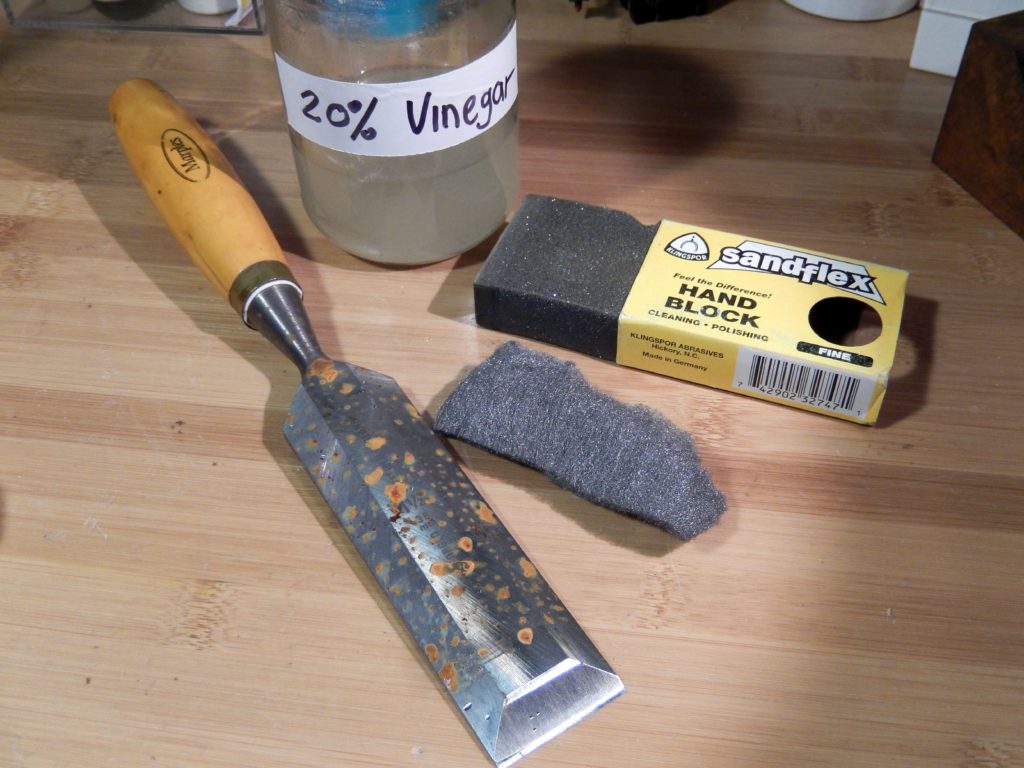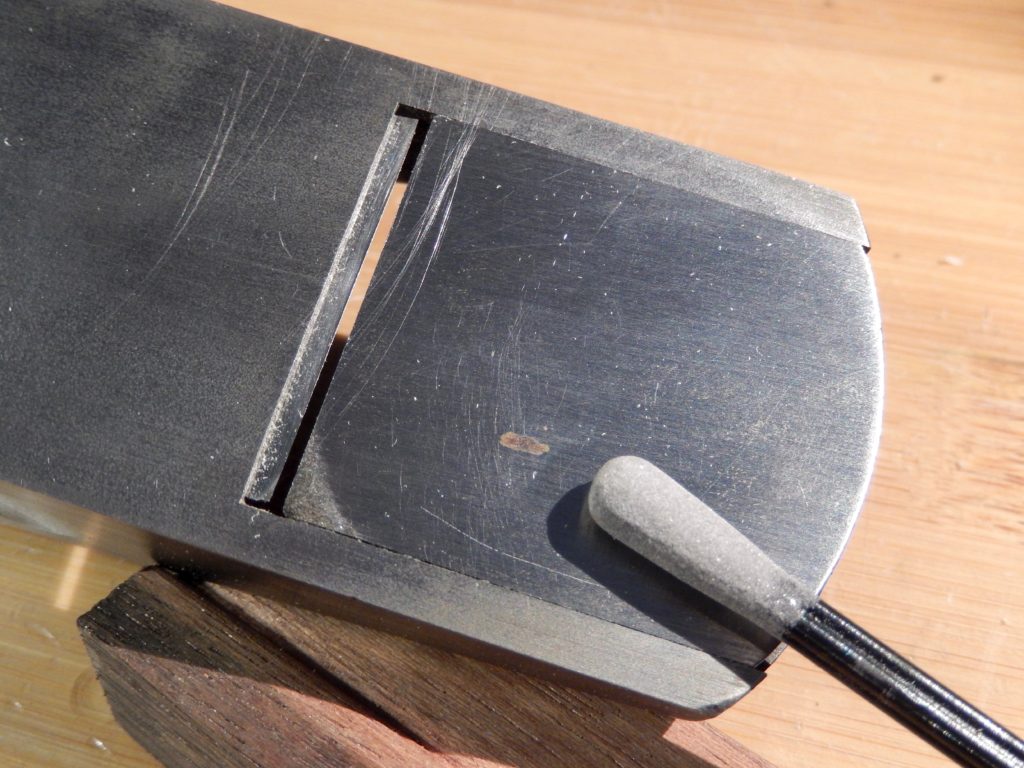We may receive a commission when you use our affiliate links. However, this does not impact our recommendations.

Strategies to have more control while removing rust with abrasives
One of the best ways to give you more control when sanding rust and to make sure you only engage the corroded areas is to back up the sandpaper with a hard and flat backing plate. If you were to hold a piece of sandpaper or an abrasive pad with your fingers instead of a cork or rubber block while sanding, the paper would conform to the undulations of both the rusted surface and the bare steel around it, leaving many imperfections in the surface. Also, hand held sandpaper will tend to round over precision milled corners and cutting edges. But if you use a flat and hard block of wood, plastic or steel and affix the sandpaper to it via pressure or adhesion, the sandpaper will erode only the high rusty ridges and skip over the uncontaminated surfaces. Another possibility for controlled rust abrasion on flat and accurate surfaces is using diamond stones and pads.



If you have a few spots that are pitted or raised points you try a Sandits – which is a sanding medium in the shape of a Q-tip. This clever product allows you to work accurately on a small surface and leave the surrounding area untouched. The Q-tips can be bought in four different grits.
High-speed rotary tools (Dremel)
Another option for removing rust fast with moderate control of the abrasive medium is to use a rotary tool such as ‘Dremel’. It may give you more control to sand off stubborn pitting and high spots. A small rotary tool is perfect for intricate detail on hardware elements.
A rotary tool can accept tiny brushes, sanding pads, flaps and disks. With a steady hand and protection by a respirator and goggles, you make a lot of progress. But pay attention to not over-sand as you run a risk of removing good steel and not just corrosion.


To remove fresh rust blemishes such as the one you find after forgetting your chisel out in the rain, you can use (0000) steel wool, a Klingspor SandFlex abrasive block, or a paper towel moistened in vinegar. If you use the vinegar remember to wipe it away with water and dry the tool immediately afterward.






Sandit is good for removal of rusted dents that are hard to get into or for eliminating raised rust dots such as in the case of the rust spot on the sole of my block plane.


The techniques I almost never use
Revolving steel or brass brushes and flat and fiber abrasive disks – which many restorers use to remove rust from railings, wrought iron and flat surfaces – can be fast and effective but are noisy and aggressive. Revolving steel and brass brushes mounted on an angle grinder or on a drill may remove rust, but most likely only the loose and flaky particles on easy to access area. Sanding and grinding discs are much more effective than brushes but are highly aggressive. They are not recommended for removing rust from delicate details or valuable tools or items.
Here are some supplies and tools we find essential in our everyday work around the shop. We may receive a commission from sales referred by our links; however, we have carefully selected these products for their usefulness and quality.








